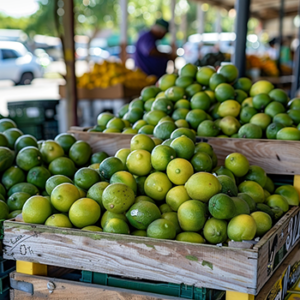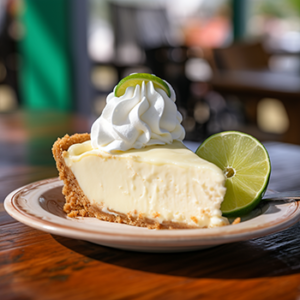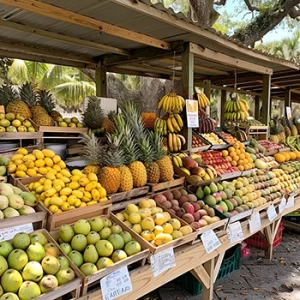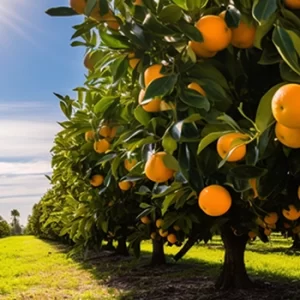
Key Limes Season: Picking, Storing and Using this Iconic Tangy Citrus
Key limes, known for their tangy, aromatic flavor, are a must-have for creating the perfect Key lime pie, refreshing cocktails and mocktails, or zesty marinades.
In this guide, we’ll dive into everything you need to know about Key limes, from when they’re in season and where they grow to tips on picking, preserving, and using them. We’ve also got some suggestions for local farms and markets to buy your fresh key limes in season!

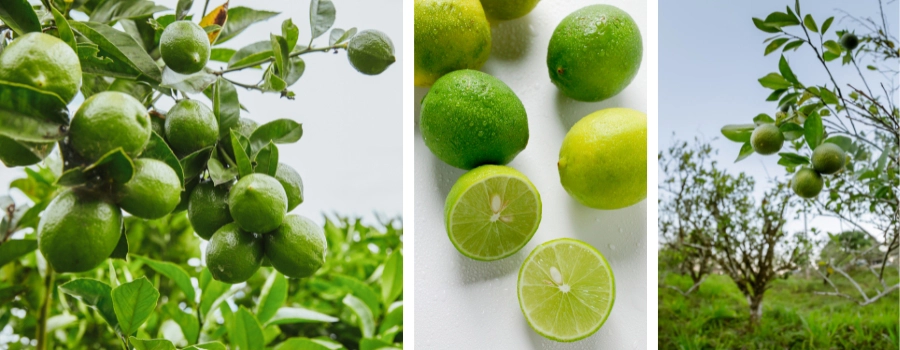
Key Limes Season
Key limes are typically in season from June through September, with their peak occurring in the summer months. While they’re often available year-round in warm climates like Florida, the summer season offers the juiciest and most flavorful fruit.
During this time, many farms in Florida offer farm fresh Key limes by the pound. Stock up for preserving, freezing, or dehydrating them for future use.
Where Do Key Limes Grow?
Key limes thrive in tropical and subtropical climates, primarily in:
- Florida, especially in the southern regions and the Florida Keys.
- Mexico, where they are widely grown.
- The Caribbean, which provides an ideal climate.
Planting Zones and Tree Characteristics
- Planting Zones: USDA zones 9–11, where frost is minimal.
- Tree Size: Key lime trees are small, reaching about 6–13 feet tall, making them suitable for backyard gardens in warm regions.
- Yield: A healthy tree can produce 30–50 pounds of fruit annually, sometimes more with proper care.
If you’d like to grow your own key lime tree, choose a variety that will grow where you live (check your USDA planting zone, and match it to the variety of lime tree to buy).
Look up your home’s planting zone on the official USDA Plant Hardiness Zone Map here, using your zip code.
You can grow key lime trees in the ground or in a large container. These trees need full sun and a good amount of water, and should be pruned regularly. Check into dwarf varieties if your space is small or you plan to grow in a container on a sunny patio.
Buy Fresh Key Limes in Florida: Popular Farms and Markets
If you’re in Florida during Key lime season, visit these farms and markets for the freshest fruit:
Robert Is Here Fruit Stand & Farm
- Location: Homestead (south end of Miami)
- Details: A renowned spot for tropical fruits, including Key limes.
- Website: www.robertishere.com
Al’s Family Farm
- Location: Fort Pierce, FL
- Details: A citrus-focused farm offering fresh Key limes in season.
- Website: www.alsfamilyfarms.com
Bedner’s Farm Fresh Market
- Location: Boynton Beach, Delray and West Palm Beach
- Details: Offers locally grown produce, including Key limes in the summer.
- Website: www.bedners.com
How to Pick Key Limes
How to Tell When Limes Are Ripe
When selecting limes, follow these tips for the best quality:
- Color: Bright green for Persian limes; slightly yellow for Key limes.
- Texture: Smooth and glossy with no wrinkling.
- Softness: A ripe lime will give slightly when pressed.
- Weight: Heavier limes usually have more juice.
How Long Do Limes Last?
- At room temperature: 1 week.
- In the fridge: Whole limes last 3–4 weeks in the crisper.
- Cut limes: Store in an airtight container and use within 2–3 days.
How to Store Limes
Storing limes properly ensures you can enjoy their vibrant flavor long after the season ends:
Refrigeration:
Store whole limes in the fridge to extend their life up to 3–4 weeks.
Freezing:
Key limes can last up to 12 months in the freezer if stored properly. For best results, freeze Key lime juice in airtight containers or ice cube trays, and store zest in sealed bags or containers to maintain flavor and quality. Whole Key limes can also be frozen, but they may lose texture over time.
Dehydration: See next section for ways to dehydrate limes for long-term storage
How to Dehydrate Limes
Dehydrating Key limes is a great way to preserve their tangy flavor and vibrant aroma for later use. Dehydrated lime slices are versatile, making an excellent addition to:
- Cocktail garnishes: Add visual flair and zesty flavor.
- Tea blends: Infuse a citrusy kick into your brews.
- Snacks: Enjoy the tangy slices on their own.
- Cooking and baking: Grind dehydrated limes into powder for seasoning.
Dehydrating Key Limes: Manual Method
- Slice the limes: Use a sharp knife to cut the limes into thin, uniform slices (about 1/8 inch thick).
- Prepare the baking sheet: Place the slices on a parchment-lined baking sheet, ensuring they don’t overlap.
- Dry in the oven: Set your oven to the lowest temperature (around 140–150°F). Prop the door open slightly with a wooden spoon to allow moisture to escape.
- Flip halfway: After about 2–3 hours, flip the slices to ensure even drying.
- Check for dryness: The slices are ready when they’re brittle and snap easily (usually 4–6 hours total).
- Store: Let cool completely and store in an airtight container for up to 6 months.
Dehydrating Key Limes: Using a Dehydration Machine
- Slice the limes: Cut into thin, uniform slices (1/8 inch thick).
- Arrange on trays: Place slices in a single layer on the dehydrator trays without overlap.
- Set the temperature: Most dehydrators have a specific setting for fruits, around 125–135°F.
- Dehydrate: Allow the machine to run for 6–8 hours, checking occasionally for dryness.
- Cool and store: Once dried, let the slices cool and store them in an airtight container.
Dehydrating Key limes is an easy, effective way to reduce waste and enjoy their zesty flavor year-round!
Lemons vs. Limes
Lemons and limes are both citrus fruits but differ in several ways:
- Flavor: Lemons are sweeter and less tart; limes are more acidic and zesty.
- Color: Lemons are yellow, while limes range from bright green to yellowish when ripe.
- Uses: Lemons excel in sweet dishes and teas, while limes are staples in savory recipes, cocktails, and marinades.
And, key limes have a particularly iconic flavor that adds a more authentic “Key West” flavor when spritzing over your seafood, baking fresh in a key lime pie, adding to your tropical cocktails or mocktails and more.
See More of My Key Lime & Florida Fruits Blog Posts Here:
Conclusion
Key limes are a quintessential citrus fruit with a season that brings their zesty flavor to the forefront. Whether you’re visiting a Florida farm for fresh-picked limes or learning how to preserve their tangy goodness, these tips will help you make the most of this iconic fruit.





